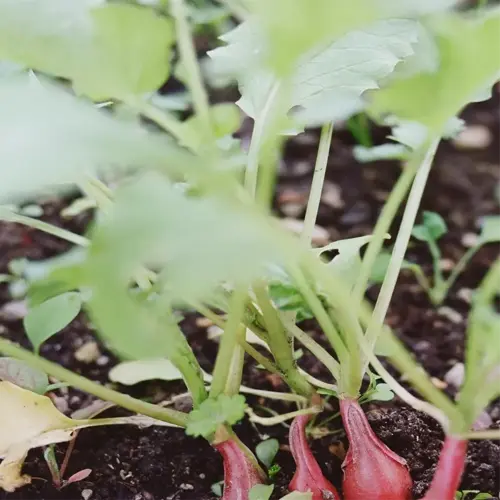How should I space shallot plants?

Written by
Tina Carter
Reviewed by
Prof. Martin Thorne, Ph.D.Proper spacing of shallots has a direct correlation to the size of the bulb and the resistance of the bulbs to diseases. In rows spaced 30 cm apart (12 inches), place cloves 15-20 cm apart (6-8 inches) from each other. This spacing allows for 140-160 plants per 10 sq m (100 sq ft) of planting area and maintains a good compromise between planting density and airflow around the plant. Planting beds too crowded within plant spacing can lead to fungal issues that I have encountered growing in humid climates.
Soil Prep
- Till soil 20 cm (8 inches) deep before planting
- Mix 3 cm (1 inch) compost into topsoil
- Test drainage with 5 cm (2 inch) hole water test
Maintenance
- Weed weekly using hand tools near bulbs
- Mulch 7 cm (3 inches) straw after planting
- Thin clusters at 4 weeks if overcrowded
Companion Planting
- Garlic 25 cm (10 inches) apart deters pests
- Lettuce 15 cm (6 inches) shades shallow roots
- Avoid beans competing for nitrogen
To achieve continuous leaf harvest, sow plants with a spacing of 5 cm (2 inches) apart in defined rows. Snip the outer leaves weekly about 2 cm (1 inch) above the soil surface. The benefit of this technique is a yield of 300-400g (10-14 oz) of greens per month per sq m while allowing the central bulbs to mature unharvested.
In locations with a rainy climate, the spacing between plants should be changed to around 20 cm (8 inches). Ample airflow reduces the risk of mildew. In dry climatic zones, closer 12 cm (5 inches) spacing can help conserve soil moisture. Always look for yellow leaves; if plant leaves are yellowing, it might indicate overcrowding, or possibly a nutrient deficiency, which needs prompt correction.
Read the full article: How to Grow Shallots: Essential Tips for Success

